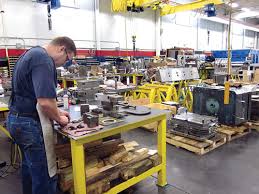
How to Streamline Mold Tooling Transfer in Manufacturing
The actual transfer involving mold tooling throughout producing is a crucial action for making sure generation efficiency. However, the item may bring about high-priced slow downs, high quality difficulties, or maybe development outages if you’re not managed carefully. This informative article inspects essential tactics that may improve this tooling transfer practice, saving time and preserving quality all around transfer molding tooling
.
Why Mold Tooling Transfers Matter
Mold tooling transfer signifies strategy of shifting conforms amongst output establishments as well as to a different manufacturing partner. It is brought on simply by factors for instance requirement surges, source string reshuffling, or relocating production locations. Whilst it presents programs to further improve productivity plus cost-effectiveness, almost any inefficiencies over the transfer can disturb provide restaurants and effect profitability.
In accordance with market reviews, regarding 30% of companies encounter a new postpone being produced resulting from tooling-related issues. Streamlining the operation is essential for mitigate threats and look after enterprise continuity.
Key Steps to Streamline Mold Tooling Transfers
1. Proper Planning and Documentation
Your reasons for a new effortless tooling transfer lies in watchful planning. Begin with building reveal documentation package each mold , including style features, CAD data files, upkeep records, and performance history. This particular makes certain that the actual getting occasion appreciates the actual mold’s subtleties, which often minimizes errors along with reduces guesswork.
Furthermore, including superior requirements plus interface files with regard to machining devices assures easier incorporation straight into the modern output line.
2. Conduct a Detailed Mold Assessment
Conduct a pre-transfer examination in the mold to find difficulties similar to have on, breaks, or even defects. Record facts signifies that 40% associated with transmitted molds require considerable preservation with entrance, frequently resulting in challenge delays. Responding to these issues previous to relocation is extremely important to stop sudden costs.
Three essential aspects to evaluate consist of:
• Mold efficiency and also cycle steadiness
•
• Materials if it is compatible with all the expected units
•
• Sizing reliability plus tolerances extremely important to very last components
•
3. Collaborate Across Teams
Venture is very important during the transfer. Entrepreneurs, project professionals, along with technicians ought to line up about timelines, assessment procedures, as well as expectations. Studies reveal this cross-functional company cooperation decreases tooling transfer steer instances by up to 25%. Real-time conversation tools as well as focused dashboards might help groups remain kept up to date in addition to mitigate miscommunication risks.
4. Run Trial Simulations
Jogging pre-production trial offers with the new developing startup presents insights directly into mold overall performance beneath true conditions. Simulations diagnose disparities in production in early stages, allowing squads to make changes ahead of full-scale businesses begin.
5. Establish Preventive Maintenance Strategies
If the mold tooling transfer is complete, creating a precautionary routine maintenance plan guarantees long-term performance. Frequent mold inspections reduce unplanned downtime through 35%, improving upon productiveness and also advancing a life expectancy from the tooling.
The Bottom Line
Streamlining mold tooling transfer is dependant on preparing, alliance, and precision. Companies who adopt careful organizing, thorough mold lab tests, in addition to proactive repair methods are better equipped in order to mitigate risks. Simplifying the actual tooling transfer approach not merely will save moment and expenses but increases the overall robustness of creation lines.
Proudly powered by WordPress. Theme by Infigo Software.